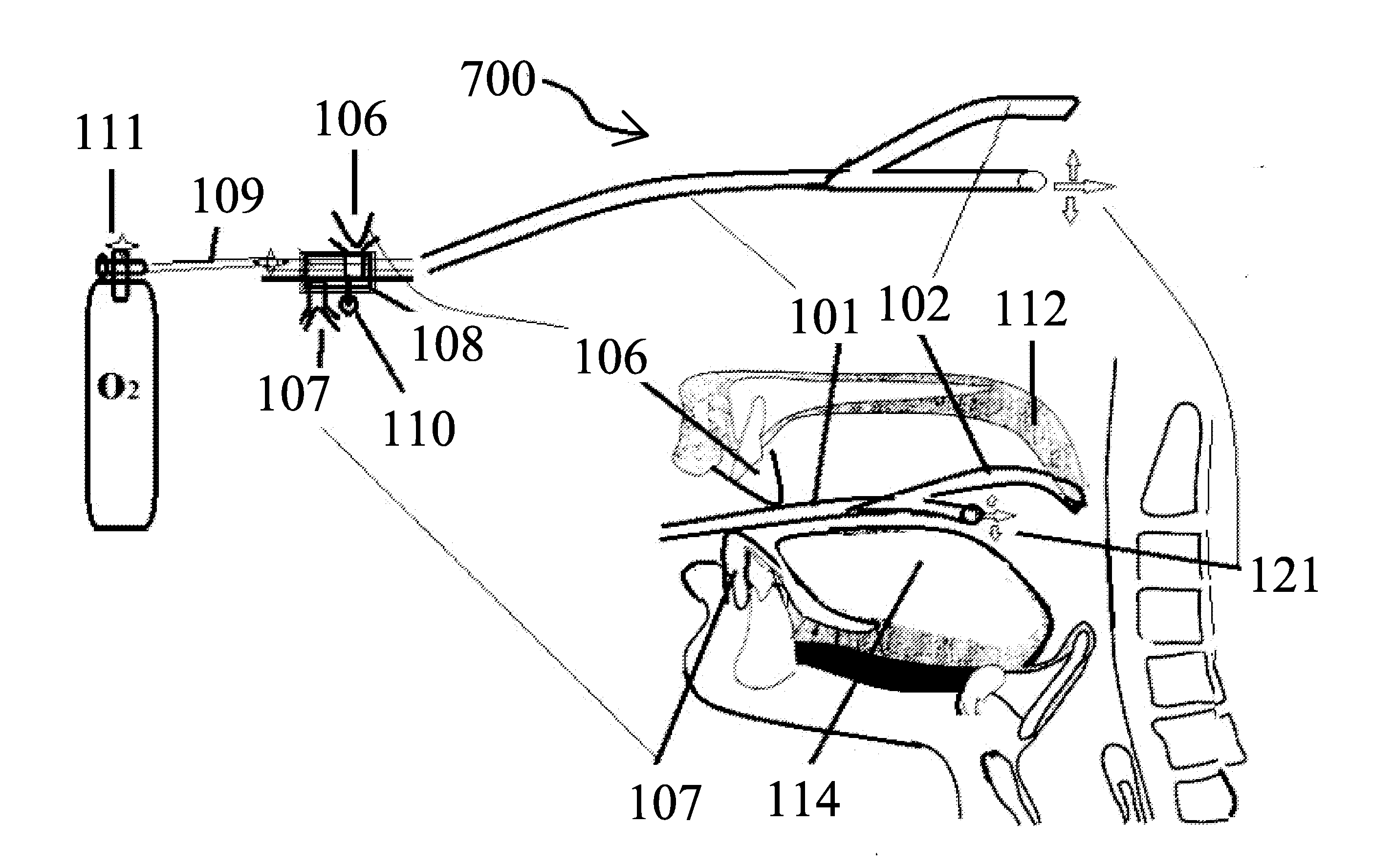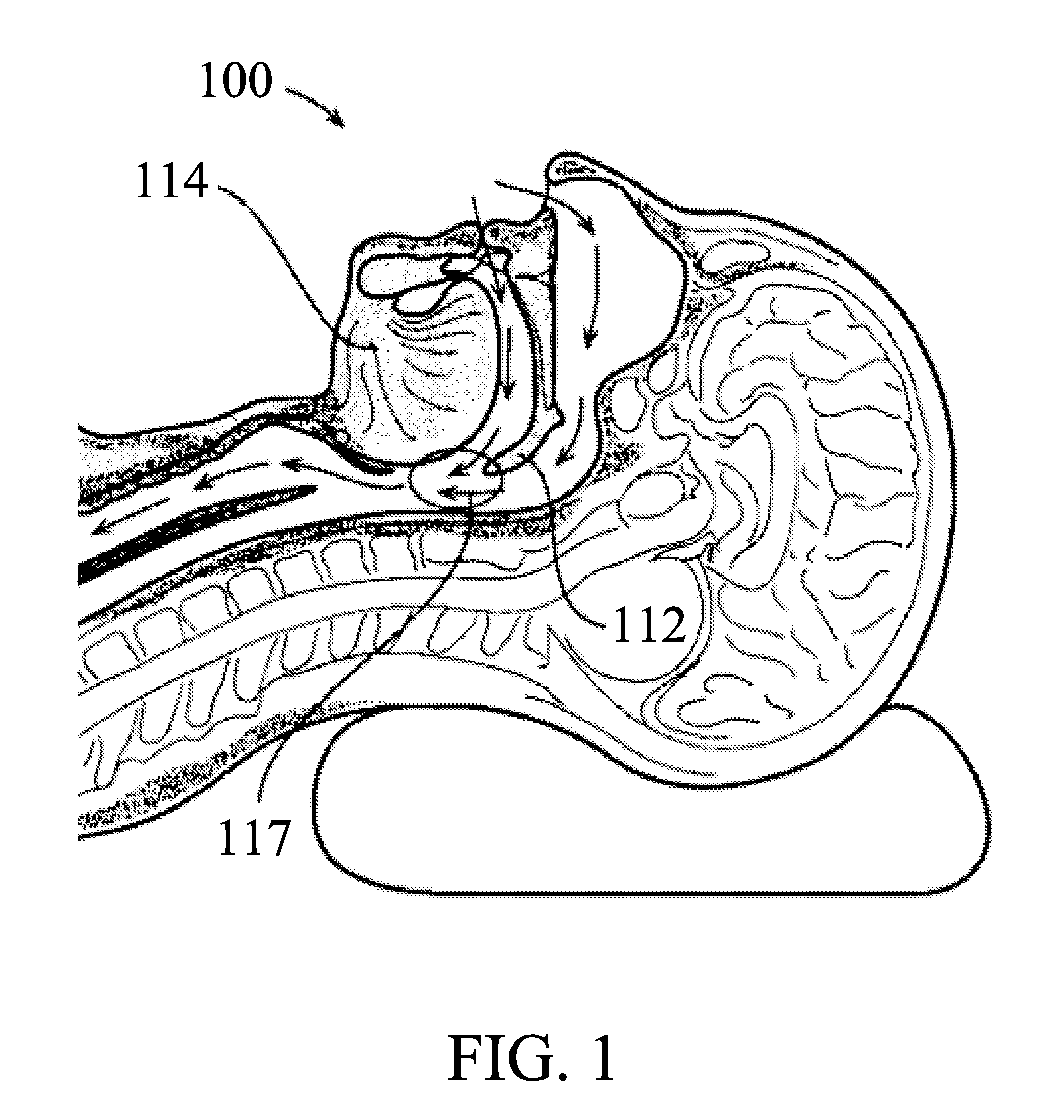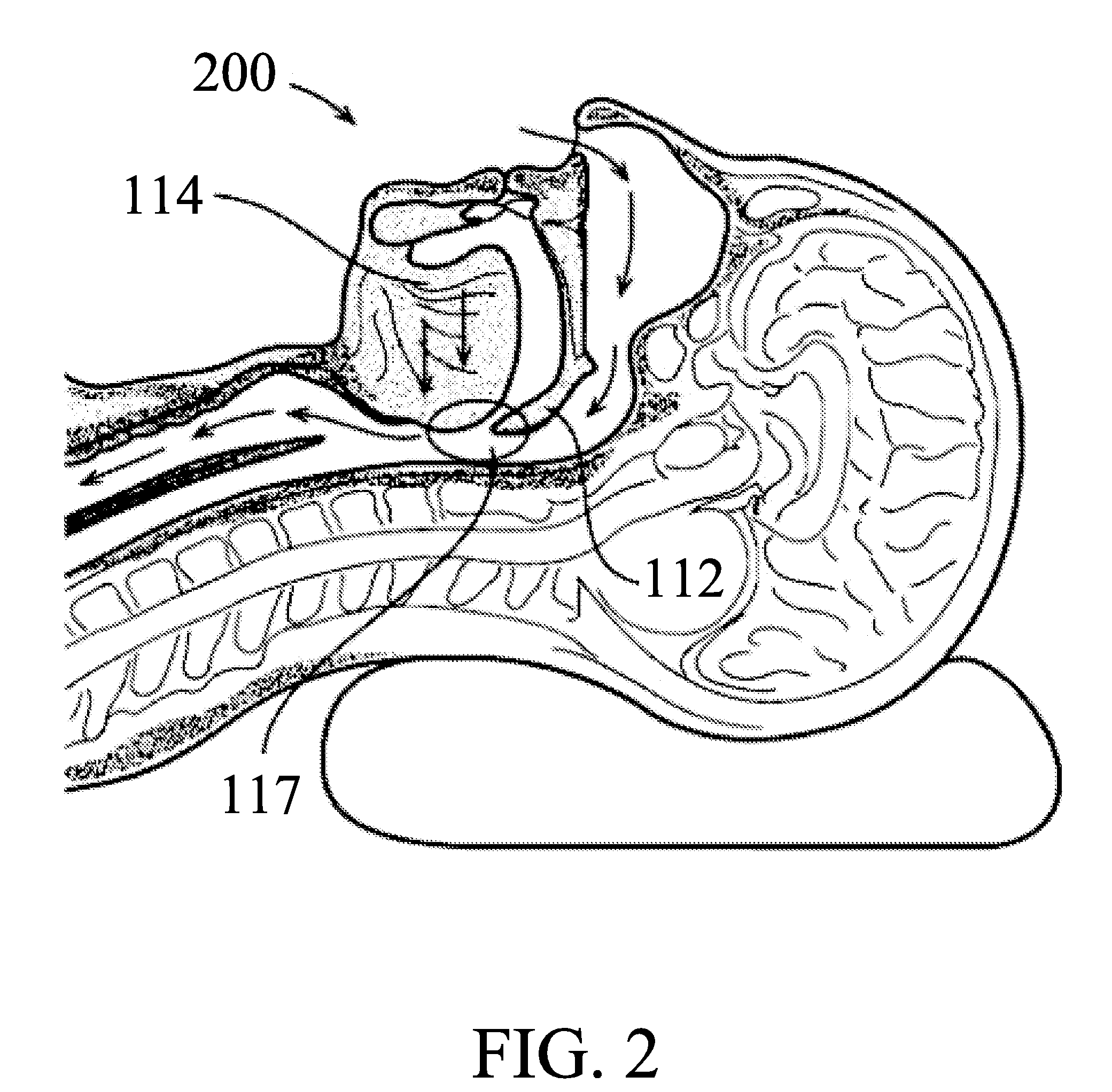Snoring and obstructive sleep apnea prevention and treatment device
a technology for obstructive sleep apnea and prevention, applied in the field of snoring and obstructive sleep apnea prevention and treatment devices, can solve the problems of constant trauma to the tongue, unplanned or unplanned trauma, and increased risk of developing obstructive, so as to reduce the sensitivity of the tongue, promote nasal passages, and reduce the effect of air turbulen
- Summary
- Abstract
- Description
- Claims
- Application Information
AI Technical Summary
Benefits of technology
Problems solved by technology
Method used
Image
Examples
Embodiment Construction
[0089]According to a present invention snoring and obstructive sleep apnea patients are treated by recognizing a patient with snoring with or without obstructive sleep apnea (OSA) attributable at least in part to due to the vibration of the soft palate during inspiration and movement of a base of the tongue of said patient toward a pharyngeal wall of the patient which causes obstructive sleep apnea. The method includes detecting a region in the tongue extending from mandible to the base of the tongue; preventing the muscular tissue of the tongue moving back towards the pharynx; and vibration of the soft palate resulting in the snoring and obstructive sleep apnea. The present invention prevents the tongue of the patient from obstructing the air passage which causes OSA. The proximal portion of the device is attached to the first to be secured to the teeth by use of Incisors teeth receptacles or pockets of the jaw bone of the patient, or tip of the tongue or hard palate with the rest ...
PUM
 Login to View More
Login to View More Abstract
Description
Claims
Application Information
 Login to View More
Login to View More - R&D
- Intellectual Property
- Life Sciences
- Materials
- Tech Scout
- Unparalleled Data Quality
- Higher Quality Content
- 60% Fewer Hallucinations
Browse by: Latest US Patents, China's latest patents, Technical Efficacy Thesaurus, Application Domain, Technology Topic, Popular Technical Reports.
© 2025 PatSnap. All rights reserved.Legal|Privacy policy|Modern Slavery Act Transparency Statement|Sitemap|About US| Contact US: help@patsnap.com



